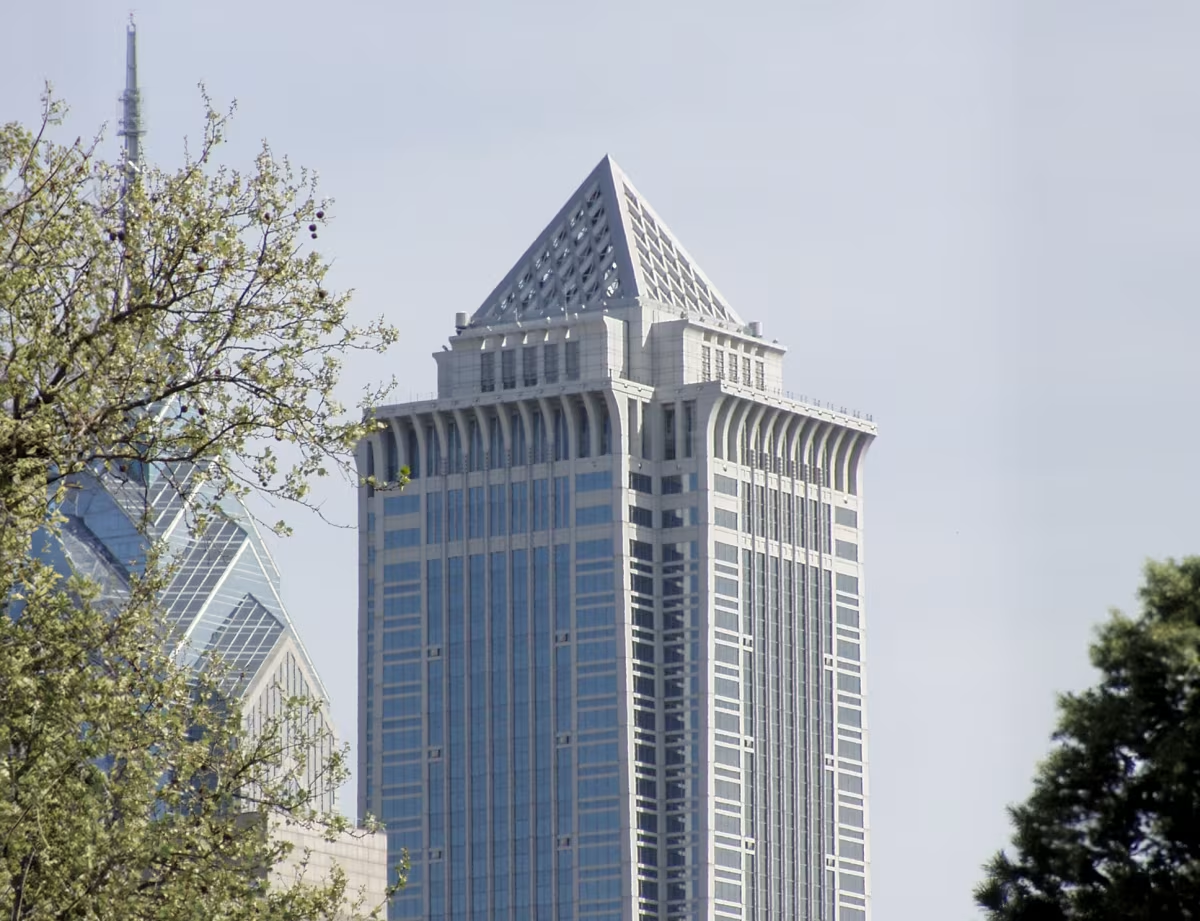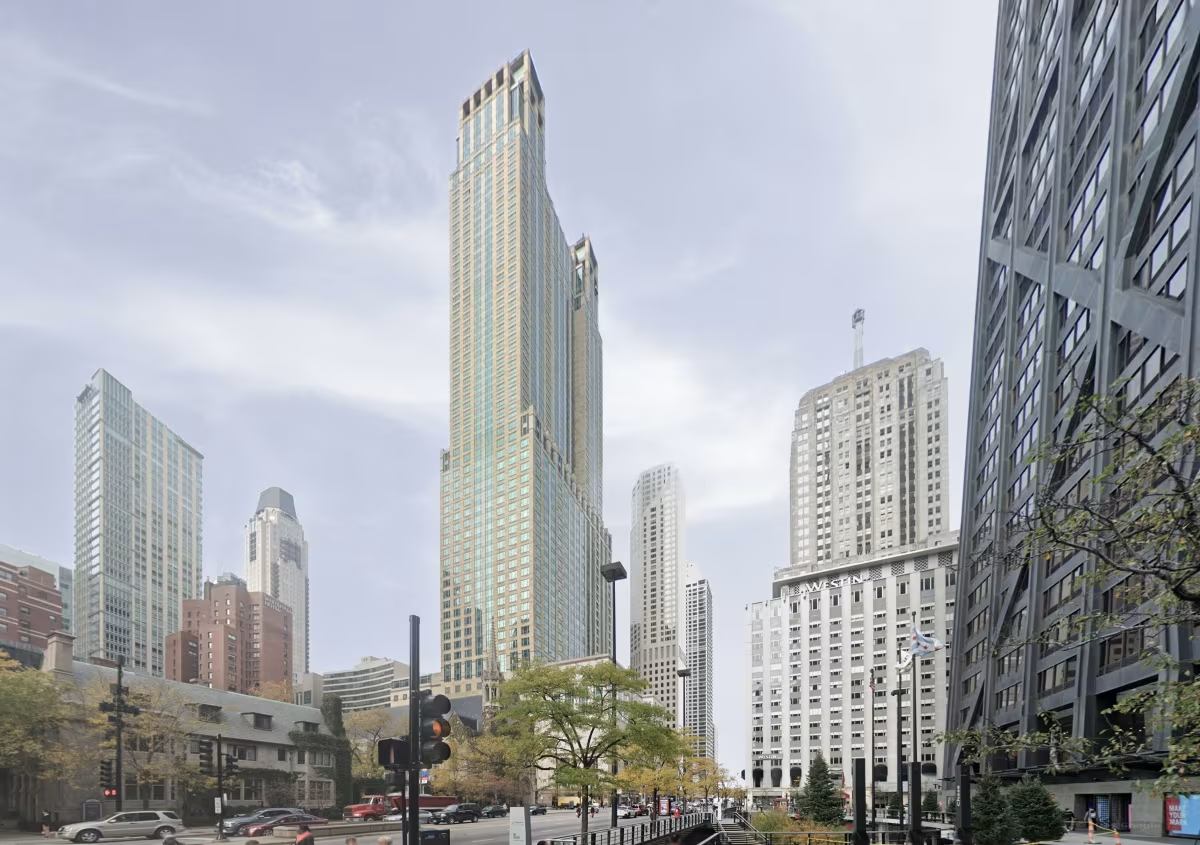BNY Mellon Center Philadelphia Building vs 900 North Michigan Building


Comparing the BNY Mellon Center Philadelphia Building and the 900 North Michigan Building is an interesting exercise, because even though they are located in different cities (Philadelphia, PA and Chicago, IL), both were designed by Kohn Pedersen Fox Associates and finished within just one year apart. This gives us the chance to see how the same architect's ideas were expressed in different urban contexts almost simultaneously.
Height & Size
The 900 North Michigan Building is clearly the larger tower of the two, both in terms of height and number of floors. It rises to 871ft (265.5m) with 66 floors above ground, while the BNY Mellon Center Philadelphia Building reaches 791ft (241m) with 54 floors above ground.
Of course, each project may have faced different briefs or regulatory constraints, which we don't really know about and could also explain the outcome.
Architectural Style
Both the BNY Mellon Center Philadelphia Building and the 900 North Michigan Building were designed in line with the aesthetic conventions of the Postmodernism style.
At the time, this style was at the height of its popularity. So Kohn Pedersen Fox Associates followed what was in many ways expected at the time, producing designs that fit comfortably within contemporary architectural norms rather, than breaking with convention.
Uses
The 900 North Michigan Building follows a mixed-use model, combining retail, commercial, residential and hotel. In contrast, the BNY Mellon Center Philadelphia Building has remained primarily commercial.
The 900 North Michigan Building incorporates a 5-star hotel with rooms. More information is available at the official website.
The 900 North Michigan Building offers 106 residential units.
Both towers provide significant parking capacity, with BNY Mellon Center Philadelphia Building offering 160 spaces and the 900 North Michigan Building offering 1330.
Structure & Facade
Both the BNY Mellon Center Philadelphia Building and the 900 North Michigan Building rely on a Frame structural system.
A frame structure uses a grid of columns and beams to carry the building's loads. This frees the walls from structural duties, allowing for flexible floor plans and larger windows.
They also employ the same type of facade, a Curtain Wall facade.
A curtain wall is a non-load-bearing facade hung from the structural frame. It is anchored to floor slabs and transfers only its own weight and wind loads, allowing for sleek, glassy exteriors.
| BNY Mellon Center Philadelphia Building | 900 North Michigan Building | |
|---|---|---|
| Kohn Pedersen Fox Associates | Architect | Kohn Pedersen Fox Associates |
| 1988 | Construction Started | 1987 |
| 1990 | Year Completed | 1989 |
| Postmodernism | Architectural Style | Postmodernism |
| Commercial | Current Use | Mixed |
| 54 | Floors Above Ground | 66 |
| 2 | Floors Below Ground | 1 |
| 241 m | Height (m) | 265.5 m |
| Frame | Structure Type | Frame |
| Steel And Concrete | Vertical Structure Material | Steel And Concrete |
| Steel And Concrete | Horizontal Structure Material | Reinforced Concrete |
| No | Facade Structural? | Yes |
| Stone, Glass, Aluminum | Main Facade Material | Limestone, Glass |
| Turner Construction | Main Contractor | J.A. Jones Construction |
| CommonWealth REIT | Developer | Urban Retail Properties |
| WSP Cantor Seinuk | Structural Engineer | Alfred Benesch & Company |
| PA | State | IL |
| Philadelphia | City | Chicago |
| 1735 Market Street | Address | 900 N Michigan Avenue |